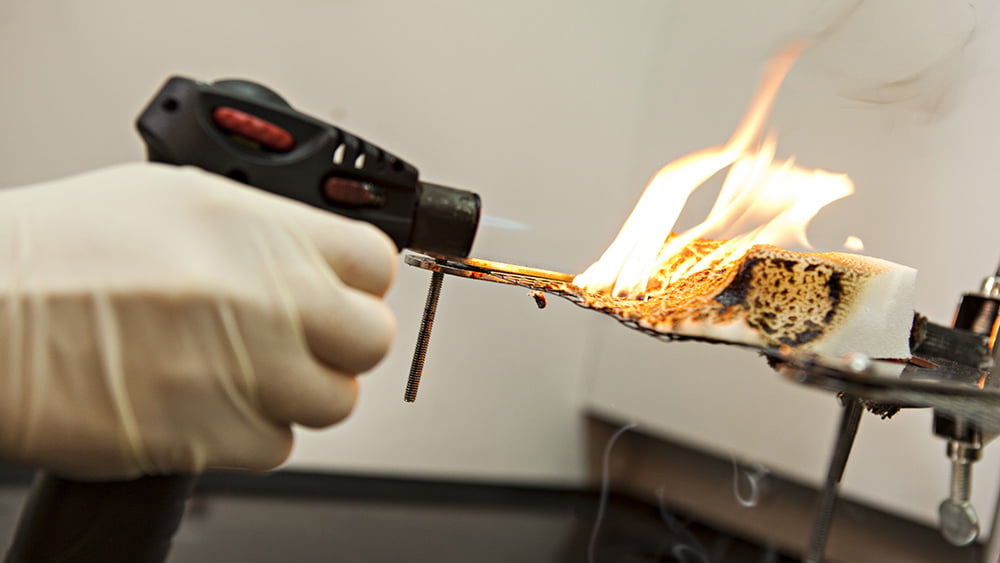
Dr. Jaime Grunlan and his team are helping lead the effort to pursue safer, more effective ways to protect flammable objects through the development of flame-retardant surface treatments.
Grunlan, the Linda & Ralph Schmidt ’68 Professor in the J. Mike Walker '66 Department of Mechanical Engineering, is an international leader in the field of flame-retardant surface treatments and recently published a review in Nature Reviews Materials describing the state of the art in this important field of research.
The team's goal, alongside their peers, is to produce surface treatments that serve to be more effective in their fire protection and less damaging to the environment. "Many current flame-retardant treatments are ineffective, or not effective enough, and contain toxic chemistries," Grunlan said. "We and others around the world are seeking to make flame-retardant treatments safer and much more effective at stopping fire."
Current research by Grunlan's team aims specifically to protect telephone and transmission line poles to prevent forest fires, treat textiles for military use and reduce the flammability of a variety of foams and fabrics used in vehicles including planes, trains and cars. While much progress has been made over the last decade, there is still much work to be done.
"As flame-retardant regulations are changing around the world and new fire threats are constantly presenting themselves, this review of flame-retardant surface treatments is especially timely," Grunlan said.
Through the use of these surface treatments, researchers hope to make commonly used flammable materials, including polyurethane foam and polyester fabric, anti-flammable or self-extinguishing. In some cases, the treatments can even be used to reduce smoke production.
"The field of flame-retardant treatments is seeking to prevent loss of life and property damage by imparting self-extinguishing and anti-flammable behavior to various materials," Grunlan said. "Plastics are inherently flammable and are often the cause of spreading fire more rapidly in buildings and transportation. Appropriate treatments make it much more difficult for materials to ignite and spread the fire."
While surface treatments like those developed by Grunlan's team have their benefits over the more commonly used method of mixing in the fire-retardant agent to the materials of interest, there are drawbacks that researchers are seeking to address.
"Durability of these treatments to washing and environmental damage is one key issue, along with the need for more effective and environmentally friendly chemistries," Grunlan said. "My research group is working to address both of these challenges and we are at the forefront of the field in this regard."
The Nature Reviews Materials journal publishes reviews by invitation only and seeks out the leaders in a given topic. Nature Reviews Materials has quickly established itself as the second-highest impact factor journal in the world among any field of research.